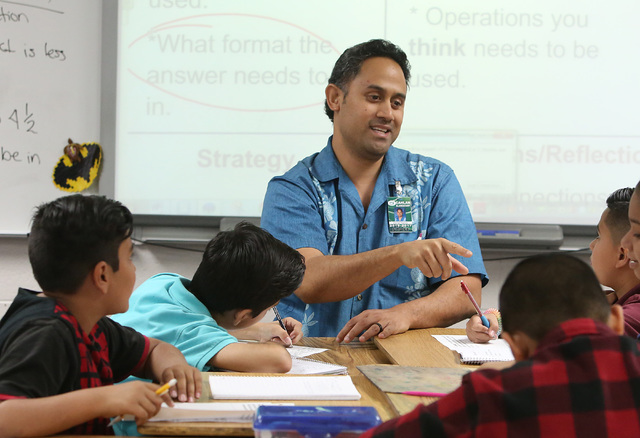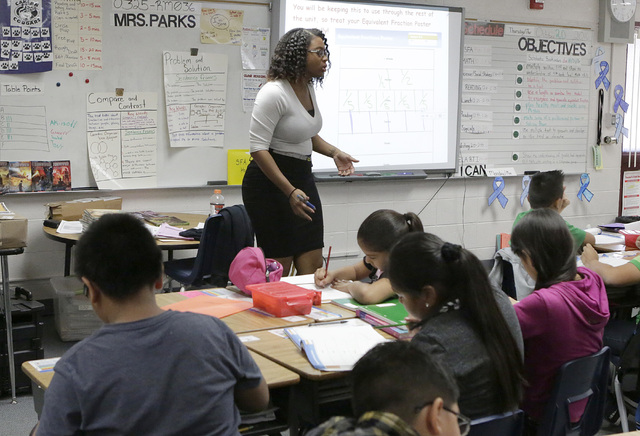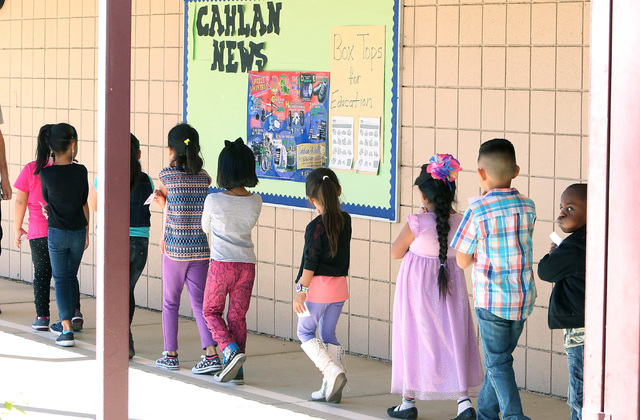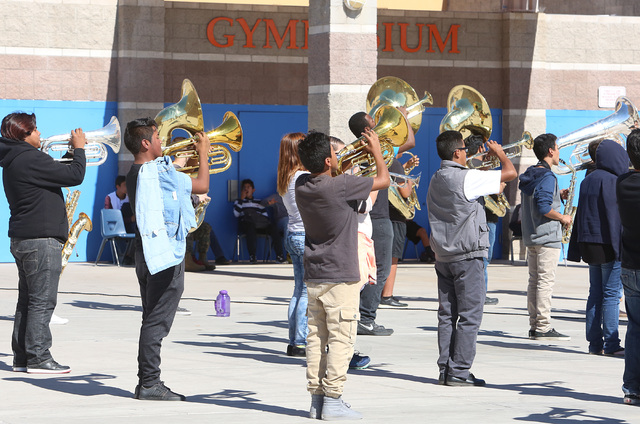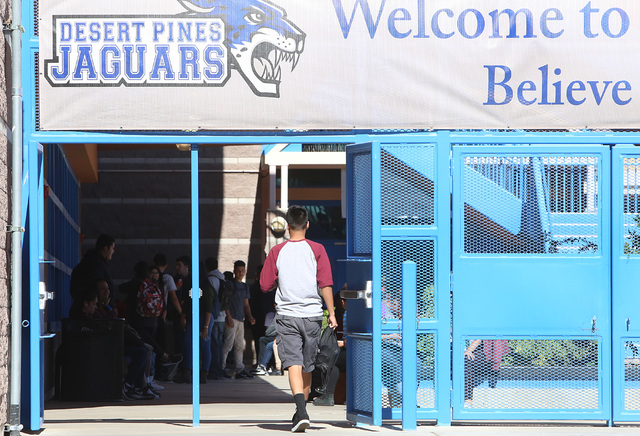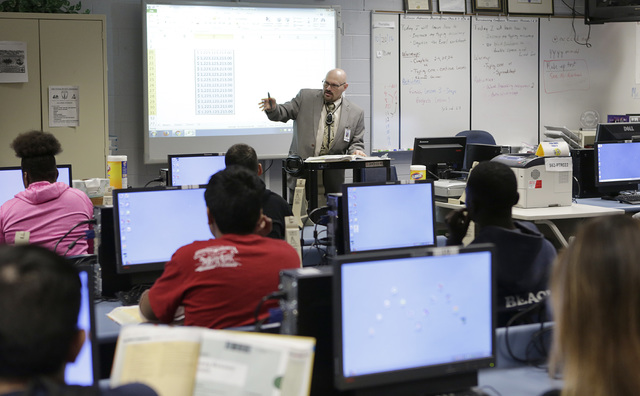CCSD schools want to rise above Nevada’s underperforming label
At the front entrance of Desert Pines High School, a banner greets students with one urgent message: “Believe in YOU. GRADUATE!”
In the main office, portraits of a few members of the Class of 2020 hang on a wall, offering an air of hope.
The school of roughly 2,500 students is one of 21 in the Clark County School District that the state considers underperforming. That makes Desert Pines eligible for conversion to a charter school through the new initiative known as the Achievement School District.
The reason: a 2015 graduation rate below 60 percent, at just 58.9. 
Yet school officials are quick to point out that the latest preliminary 2016 rate has surpassed that 60 percent mark, at nearly 65 percent.
And as the school enters Year Two in the district’s Turnaround Zone — reserved for schools that the district targets for improvement — administrators are hopeful that results will get better.
“I think with the intervention and work we’re doing, we’re not going to be in that list again,” Desert Pines principal Isaac Stein said of the underperforming list, labeled this year as Rising Stars.
Stein has launched a variety of efforts to get his kids to graduate, beefing up student clubs to keep youngsters interested. The school also eliminated its uniform requirement, started a full-time theater program and converted its woodshop to a weight room to benefit its ROTC and physical education programs.
“It’s really getting the students involved, making it a community school, and that’s really what we focused on,” he said.
But all those efforts might not spare the school from a possible takeover by the Achievement School District.
On the other end from Rising Stars, the state has recognized high-performing, high-poverty schools in its first Shining Stars list this year.
In Clark County, the six Shining Star schools on average had a slightly lower percentage of special populations — English language learners, students on special education plans or those eligible for free or reduced lunch — than underperforming schools.
Criteria for schools such as Desert Pines to enter the Achievement School District come at a transitional time in Nevada’s educational environment.
Since the Smarter Balanced testing glitch from the 2014-15 left many schools without usable results, it’s the first time principals are seeing scores from the new assessment.
Elementary and middle schools are considered underperforming if they are in the bottom 5 percent of proficiency results this year or were previously identified as a priority school. Those are schools that have demonstrated low proficiency and growth as determined through standardized test scores.
Meanwhile, high schools are eligible based on 2015 graduation rates, not the most recent 2016 rates released earlier this month.
The Desert Rose alternative high school, the district’s other eligible high school, had a 2015 graduation rate of roughly 17 percent.
At Desert Pines, getting students to simply graduate is a challenge for teachers.
Science teacher Jerry Morris teaches mainly upperclassmen in his physics class. In those latter years, he said, students have made up their mind whether they’ll graduate.
“That’s kind of the challenge: to get those that think they’re done to work toward graduation,” he said. “Because they still have time.”
On Thursday in her computer science class, sophomore Da’Janique Berkins concentrated on figuring out Excel with her classmate.
She likes the programs at Desert Pines, she said, although she added that a lot of fights happen at the school.
Berkins plans to graduate and become a lawyer, hoping to attend Xavier University. She surrounds herself with others who want to graduate, too.
“I put myself around the nerds,” she said, smiling.
Officials say Desert Pines is also dealing with a highly transient population, with about 35 to 40 students leaving and entering the school each year.
That makes it hard for the high school to move beyond its two-star status given in the 2013-14 school year, explained Assistant Chief Student Achievement Officer Jeffrey Geihs, who leads the district’s Turnaround Zone.
Throughout Clark County, the pushback against the Achievement School District is clear.
Yet while some parents and staff appear on edge over the Rising Stars list, Cahlan Elementary school is celebrating its Shining Star status.
Shining Stars received four- or five-star ratings back in 2014 — the latest available accountability rating since the 2015 assessment glitch — or had test scores in the top 10 percent of the state.
Cahlan Elementary landed among the Shining Stars with a four-star rating. Principal Amy Negrete credits that to collaboration, the sharing of best practices and a heavy investment in technology.
“Everything we do is systematic and planned-out,” she said.
Negrete is extremely happy with the school’s 2016 Smarter Balanced scores, which list 52 percent of students proficient in English and 47 percent in math.
It’s not much, but Negrete said it’s the first time the school has outperformed the district average in both subjects.
With an English language learner population of roughly 60 percent, the challenge is teaching English to kindergarten students entering the classroom with hardly any English at all.
Imagine, Negrete explained, coming from a foreign country with limited English.
“How difficult would it be for you to pass a standardized test in such a short amount of time?” she said.
Yet by fifth grade, students in Daniel Haiola’s math class are tackling a fraction problem with critical thinking.
The room is abuzz as students work in groups to explain how they solved the problem.
“When you have a high ELL population, this is what we want to hear,” Negrete said.
“This discourse between the kids.”
Contact Amelia Pak-Harvey at 702-383-4630 or at apak-harvey@reviewjournal.com.



